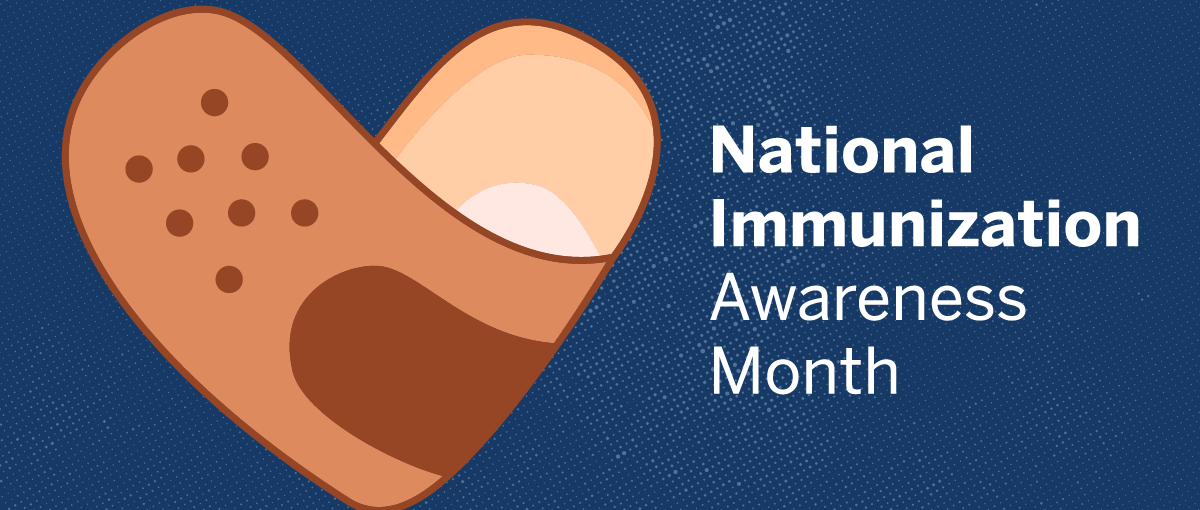August is National Immunization Awareness Month. This annual observance is designed to remind everyone that staying up to date on vaccinations is an important way to protect not only their health but the health of everyone around them.
Vaccines are a public health success story. Today, we are fortunate to have a broad spectrum of safe and effective vaccines, which if received on schedule, protect patients of all ages against vaccine-preventable diseases. Current vaccines protect against childhood disease including chicken pox, measles, and whooping cough, while protecting adults from the flu, Tdap, and shingles. Vaccines have also eradicated or nearly eradicated life-threatening diseases, such as smallpox and polio.
Children as young as 1-2 months old should be vaccinated against childhood illnesses and school-age children may need vaccine updates before they can return to school this fall. Ensuring that every child sees their doctor for a well-child visit and to receive any needed vaccine or vaccine updates is one of the best ways a parent can protect their child’s health and that of the community. Because the immunity created by a vaccine can lessen overtime, it’s important that children receive their vaccines on the recommended schedule. Adults may also need vaccine updates or to receive recently approved vaccines such as the RSV vaccine for adults 60 years of age and older.
During the COVID-19 pandemic, routine childhood vaccination levels among school-age children in the U.S. decreased, likely due to missed well-child medical visits. Globally, a report by UNICEF and the World Health Organization found that childhood vaccination coverage worldwide increased with about 4 million more children receiving full immunizations in 2022 compared to 2021, but were still below pre-pandemic levels.
Vaccines meet strict safety and effectiveness measures
In the U.S., safety measures are strict and prioritized to ensure that vaccines are safe for patients. Before any vaccine is approved for use, it is tested for safety and effectiveness through clinical trials and then must be approved by the Food and Drug Administration (FDA) and recommended by the Center for Disease Control and Prevention’s (CDC) Advisory Committee on Immunization Practices. While some people experience mild side effects after receiving a vaccine, such as swelling at the shot area, mild fevers and chills, serious reactions are extremely rare. Overall, the safety of all vaccines is closely monitored to ensure their continued safe use. If patients have questions about a vaccine including any potential side effects, they should speak to their healthcare provider.







